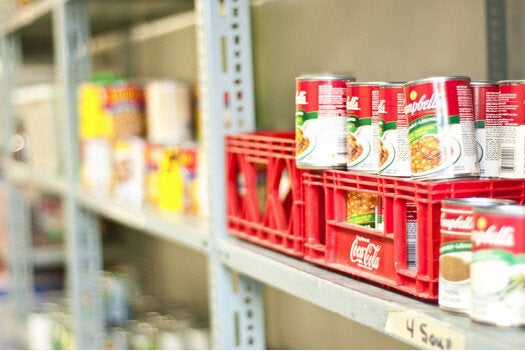
Most Huffington Post readers don't have to worry about their children going to bed with hunger pangs. But as Governor Cuomo reminded us in his State of the State address, the numbers of children going hungry have never been higher in New York. Right now one in six kids lives in a home without enough food. They suffer from what we call "food insecurity," and it has no place in the Empire State.
Unfortunately, these kids often have more to worry about than just hunger and often wind up in emergency housing. Right now, there are 16,000 children living in New York City's shelters -- kids whose lives are often suddenly and irrevocably affected by the repercussions of poverty, which include domestic violence, obesity, mental health problems and difficulties in school, among many others. These issues start at ages as young as 5 and then often follow children all the way into their adult years. These children are twice as likely to experience hunger, and four times as likely to have delayed development.
In a state as fortunate as our own, there is no excuse for this.
What's worse, we've put barriers such as finger imaging in place to prevent the very people who desperately need food assistance -- in the form of federal and state aid -- from receiving it. Our city, state, and federal governments have cut back funding to historic levels, creating a perfect storm of need. The latest estimates are that at least 700,000 New Yorkers (many of them with children) qualify for food stamps, but are not enrolled. This amounts to millions in unclaimed federal funds each year that could be used to feed New Yorkers and support our local economy.
Educating people about their eligibility and helping to remove the stigma of aid are the only ways to help these vulnerable groups -- and the kids who rely on adults -- to get the food they need.
Thankfully the governor's proposed budget has proposed an increase in funding for food stamps. The increase in funding, along with the elimination of fingerprinting as a requirement to obtain food stamps, will go a long way in addressing food insecurity.
In previous pieces, I've talked about the types of programs that these children and others rely on that are on a precipice right now because of unprecedented demand and historic budget cuts, including the federal Emergency Food and Shelter Program and the Supplemental Nutrition Assistance Program. It's not just about feeding kids in need. We owe it to them to provide some basic nutrition while doing so. As I've previously discussed, serving children high-calorie and high-fat foods can help with hunger but lead to obesity. Almost 40 percent of New York City public school children in kindergarten through eighth grade are overweight or obese. Obesity rates are disproportionally higher among people of color in low-income neighborhoods like Harlem and Corona, Queens where the percentages of obese or overweight children are 48 percent and 51 percent, respectively. It is telling that the consumption of sugar-packed drinks is consistently higher in those neighborhoods.
The governor's budget also expanded Fresh Connect Farmers Markets that will increase access to fresh fruits and vegetables in low-income communities and at the same time support New York State's vital agriculture economy.
Proper nutrition is crucial, especially for growing children. Having access to locally grown fruits and vegetables can greatly improve the health of a community. That's why United Way of New York City's food programs require soup kitchens and food pantries to limit beverages to skim milk and 100 percent fruit juices and mandate expenditures of at least 15 percent on fresh produce. In fact, after seeing the success of United Way's nutrition standards, New York State implemented a similar policy and now has a requirement that at least 10 percent of dollars spent on food by soup kitchens and food pantries statewide must be used to purchase fresh fruits and vegetables.
United Way of New York City also operates Local Produce Link which is a public-private partnership that connects farmers with low-income neighborhoods to provide fresh produce to emergency food programs. Forward-thinking, collaborative initiatives like these are crucial to overcoming the food deserts that often plague urban areas. These issues require cooperation between corporate, nonprofit and government partners so that we can find sustainable solutions to keeping our children well fed and healthy.
The governor was right when he declared, "There is never an excuse for letting any child in New York go to bed hungry." Governor Cuomo and the state legislature should be commended for their commitment to the state's Hunger Prevention and Nutrition Assistance Program, which provide critical support to food banks across the city that help struggling families put adequate food on the table.